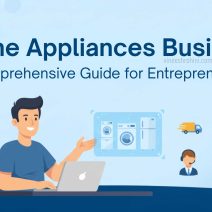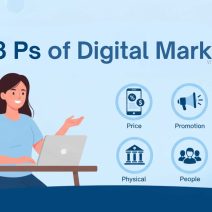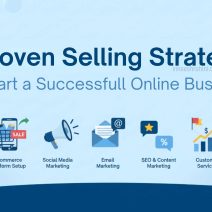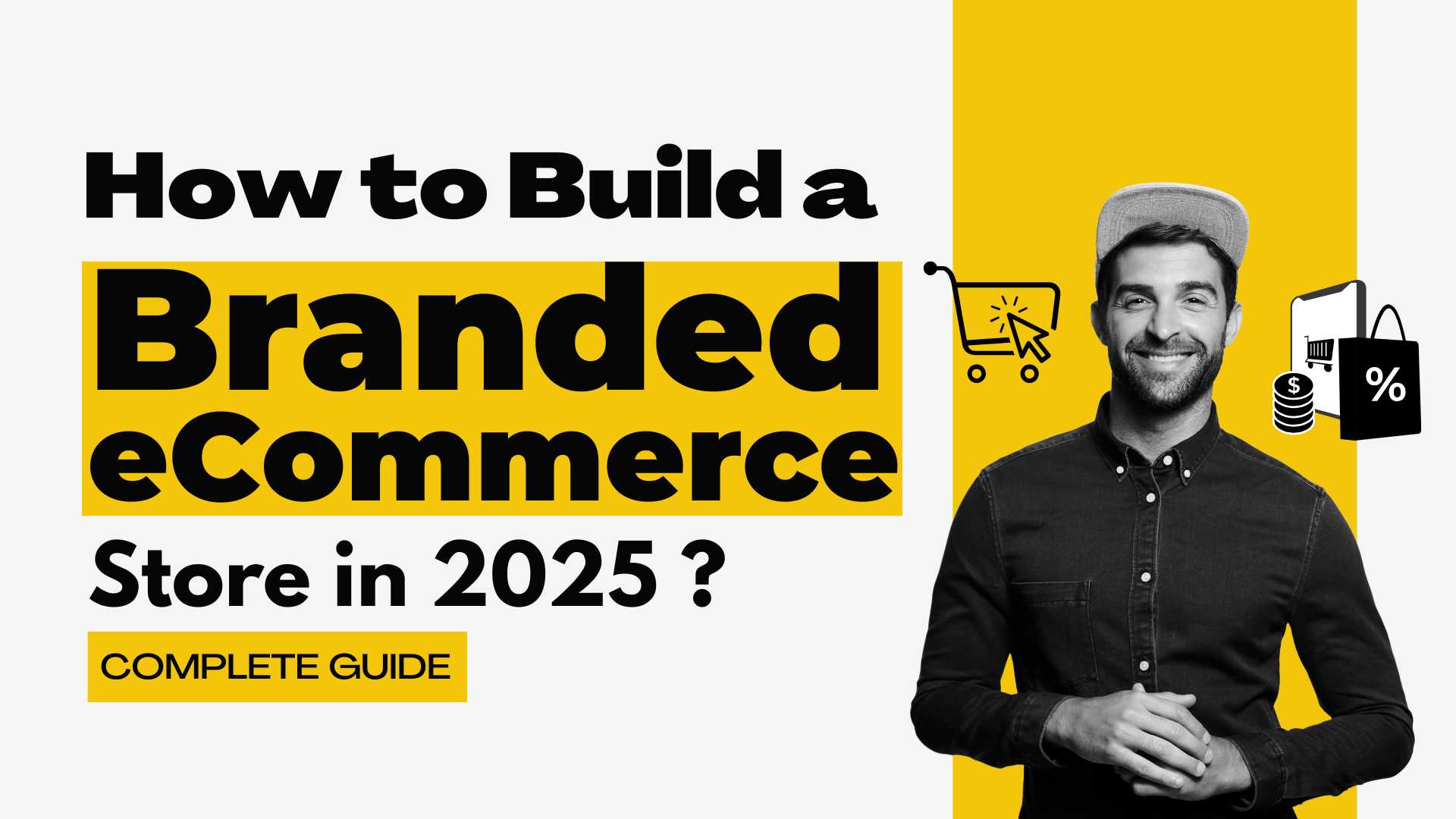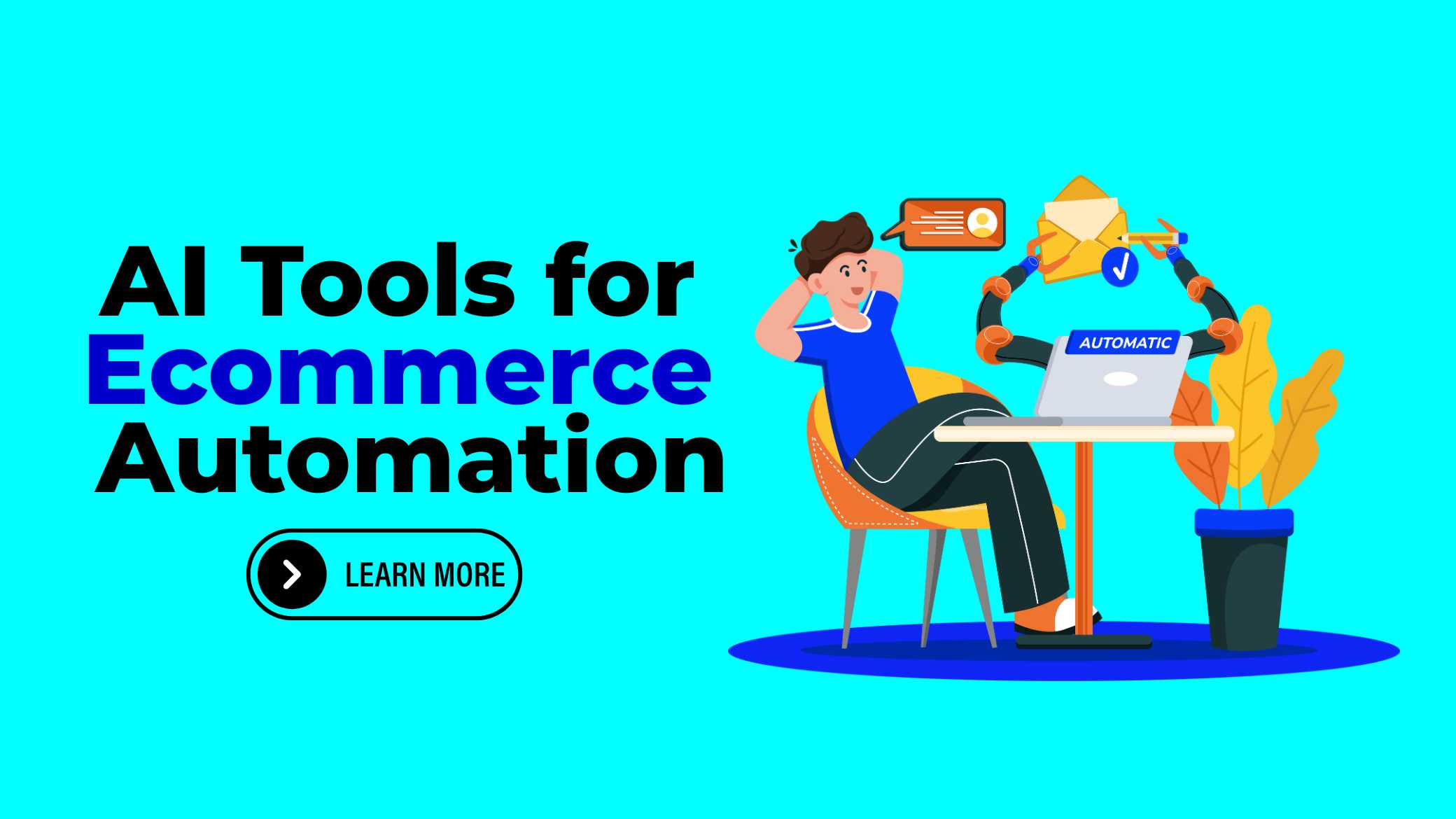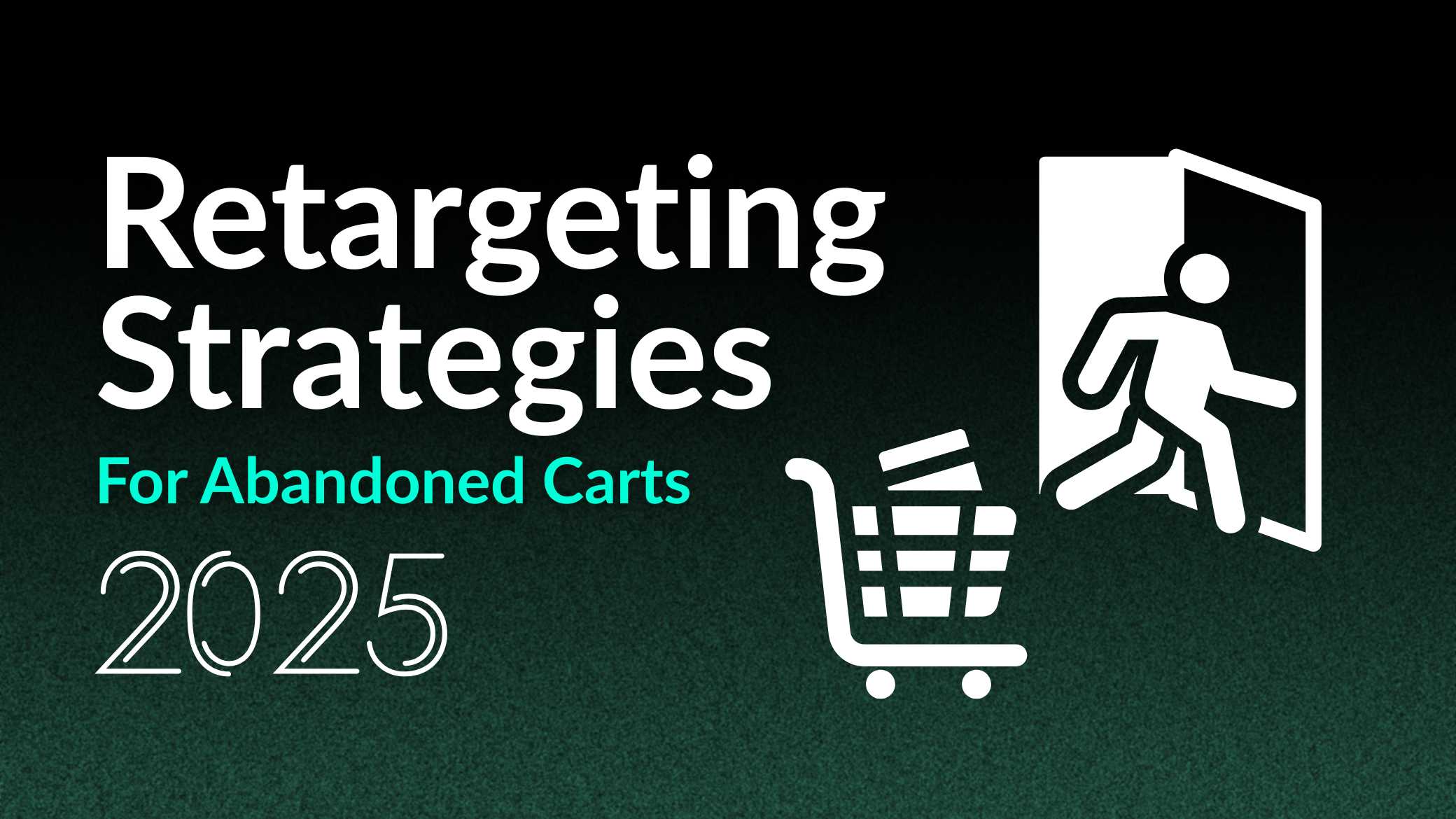Build a Branded eCommerce Store : The landscape of eCommerce is in constant evolution, and as we move towards 2025, the strategies for building a successful, branded online store are becoming increasingly sophisticated.
Table of Contents
This guide delves into the essential elements, emerging trends, and actionable steps to help you establish a distinctive and thriving eCommerce presence.
I. The Evolving eCommerce Landscape

The eCommerce industry is experiencing exponential growth, driven by factors such as increased internet penetration, mobile device usage, and changing consumer behavior. Here are some key trends shaping the future of online retail:
- Mobile Commerce (mCommerce) Dominance: With a significant portion of online shopping now occurring on smartphones and tablets, optimizing your store for mobile is no longer optional but crucial.
- Personalization and AI: Artificial intelligence (AI) is revolutionizing the customer experience through personalized product recommendations, targeted marketing, and streamlined support.
- Omnichannel Experience: Customers expect seamless interactions across multiple touchpoints, including online stores, social media, and physical locations.
- Sustainability and Ethical Consumerism: Consumers are increasingly conscious of the environmental and social impact of their purchases, favoring brands that prioritize sustainability and ethical practices.
- Augmented Reality (AR) and Virtual Reality (VR): These technologies are enhancing the online shopping experience by allowing customers to visualize products in their own space or immerse themselves in a virtual shopping environment.
- Voice Commerce: The rise of smart speakers and voice assistants is creating new opportunities for voice-activated shopping.
- Headless Commerce: This architectural approach separates the front-end presentation layer from the back-end eCommerce functionality, providing greater flexibility and customization.
Also Read : Top 10 New Trends in Ecommerce 2024
II. Defining Your Brand
Before diving into the technical aspects of building your online store, it’s essential to define your brand identity. Your brand is more than just a logo; it’s the essence of your business, encompassing your values, personality, and unique selling proposition.
- Identify Your Niche and Target Audience:
- Determine the specific segment of the market you want to serve.
- Conduct thorough market research to understand your target audience’s demographics, psychographics, needs, and preferences.
- Keywords: Niche market, target audience, market research, customer demographics, psychographics.
- Define Your Brand Values and Mission:
- What principles guide your business?
- What is your brand’s purpose, and what problem does it solve for your customers?
- Keywords: Brand values, mission statement, core principles, business purpose.
- Craft Your Brand Story:
- Develop a compelling narrative that communicates your brand’s origin, values, and unique identity.
- A strong brand story can create an emotional connection with your customers and foster loyalty.
- Keywords: Brand Storytelling, Narrative, Emotional Connection, Customer Loyalty, Brand Identity
- Develop Your Brand’s Visual Identity:
- Logo: Design a memorable and visually appealing logo that represents your brand.
- Color Palette: Choose colors that evoke the desired emotions and align with your brand personality.
- Typography: Select fonts that are legible and reflect your brand’s style.
- Imagery: Use high-quality photos and videos that showcase your products and brand aesthetic.
- Keywords: Visual identity, logo design, color palette, typography, brand imagery, brand aesthetics.
- Determine Your Unique Selling Proposition (USP):
- What makes your brand stand out from the competition?
- Identify your unique strengths, whether it’s product quality, customer service, pricing, or innovation.
- Keywords: Unique selling proposition (USP), competitive advantage, differentiation strategy.
III. Choosing the Right eCommerce Platform

Selecting the right eCommerce platform is a critical decision that will impact your store’s functionality, scalability, and overall success. Here are some popular options and factors to consider:
- eCommerce Platform Options:
- Shopify: A user-friendly, all-in-one platform with a wide range of features and apps.
- WooCommerce: A flexible, open-source plugin for WordPress, ideal for those who already use WordPress.
- BigCommerce: A scalable platform with robust features for growing businesses.
- Squarespace: A website builder with eCommerce capabilities, known for its design-focused templates.
- Magento: A powerful, open-source platform for enterprise-level businesses, offering extensive customization.
- Salesforce Commerce Cloud: A highly scalable and customizable platform, often used by large enterprises.
- Keywords: Shopify, WooCommerce, BigCommerce, Squarespace, Magento, Salesforce Commerce Cloud, eCommerce platforms.
- Factors to Consider:
- Budget: Determine your budget for platform fees, design, development, and ongoing maintenance.
- Features: Identify the essential features you need, such as product management, order processing, payment gateways, shipping options, and marketing tools.
- Scalability: Choose a platform that can grow with your business as your needs evolve.
- Ease of Use: Consider your technical skills and the platform’s learning curve.
- Customization: Evaluate the platform’s design flexibility and customization options.
- Integrations: Ensure the platform integrates with other tools you use, such as CRM, email marketing software, and analytics platforms.
- SEO Friendliness: Select a platform that is optimized for search engines to improve your store’s visibility.
- Mobile Optimization: The platform should offer responsive design or dedicated mobile features.
- Support and Security: Consider the level of customer support and the platform’s security measures.
- Keywords: eCommerce platform selection, scalability, ease of use, customization, integrations, SEO friendliness, mobile optimization, platform support, eCommerce security.
IV. Designing Your Online Store
Your online store’s design is crucial for creating a positive first impression, building trust, and driving conversions. Here are some key design principles:
- User-Centered Design:
- Prioritize the needs and preferences of your target audience.
- Ensure your store is easy to navigate, with a clear and intuitive user interface (UI).
- Keywords: User-centered design, user experience (UX), user interface (UI), intuitive navigation.
- Mobile-First Approach:
- Design your store with mobile devices in mind, as a significant portion of your traffic will come from smartphones and tablets.
- Use responsive design to ensure your store adapts seamlessly to different screen sizes.
- Keywords: Mobile-first design, responsive design, mobile optimization, mCommerce.
- Visual Appeal:
- Use high-quality product images and videos to showcase your offerings.
- Maintain a consistent visual style that aligns with your brand identity.
- Use white space effectively to create a clean and uncluttered design.
- Keywords: Visual design, product photography, video marketing, white space, design consistency.
- Branding Consistency:
- Incorporate your brand’s logo, colors, fonts, and imagery throughout your store.
- Maintain a consistent brand voice and messaging across all pages.
- Keywords: Brand consistency, brand voice, brand messaging, visual identity.
- Homepage Optimization:
- Make a strong first impression with a clear and concise homepage that communicates your brand’s value proposition.
- Feature your best-selling products, promotions, and key information.
- Use compelling calls to action (CTAs) to guide visitors through the shopping journey.
- Keywords: Homepage optimization, call to action (CTA), value proposition, landing page design.
- Product Page Optimization:
- Provide detailed product descriptions, specifications, and high-resolution images.
- Include customer reviews and ratings to build trust and social proof.
- Offer related product recommendations to encourage upselling and cross-selling.
- Keywords: Product page optimization, product descriptions, customer reviews, upselling, cross-selling.
- Checkout Process Optimization:
- Simplify the checkout process to minimize cart abandonment.
- Offer multiple payment options and ensure secure transactions.
- Provide clear shipping information and options.
- Keywords: Checkout process, cart abandonment, payment gateways, secure transactions, shipping options.
- Site Speed Optimization:
- Optimize your store’s loading speed to improve user experience and SEO rankings.
- Compress images, leverage browser caching, and use a content delivery network (CDN).
- Keywords: Site speed optimization, page load time, web performance, CDN, image compression.
V. Product Presentation and Merchandising

How you present your products can significantly impact their perceived value and your conversion rates.
- High-Quality Visuals:
- Invest in professional product photography and videography.
- Showcase your products from multiple angles and in different contexts.
- Keywords: Product photography, videography, visual merchandising.
- Compelling Product Descriptions:
- Write detailed and engaging product descriptions that highlight the benefits and features of your products.
- Use storytelling techniques to connect with your customers on an emotional level.
- Optimize your descriptions for search engines by including relevant keywords.
- Keywords: Product descriptions, copywriting, storytelling, SEO copywriting.
- Product Categorization and Navigation:
- Organize your products into clear and logical categories.
- Use faceted search and filtering options to help customers find what they’re looking for quickly.
- Keywords: Product categorization, faceted search, site navigation.
- Product Bundling and Recommendations:
- Offer product bundles to encourage customers to buy more.
- Use personalized product recommendations to suggest relevant items to each customer.
- Keywords: Product bundling, personalized recommendations, recommendation engines.
- Social Proof:
- Display customer reviews, ratings, and testimonials to build trust and credibility.
- Encourage user-generated content (UGC), such as photos and videos of customers using your products.
- Keywords: Social proof, customer reviews, user-generated content (UGC), testimonials.
VI. Marketing and Customer Acquisition

Driving traffic to your online store and acquiring new customers is essential for growth. Here are some effective marketing strategies:
- Search Engine Optimization (SEO):
- Optimize your store for search engines to improve your organic visibility in search results.
- Conduct keyword research, optimize your website’s structure and content, and build high-quality backlinks.
- Keywords: Search engine optimization (SEO), keyword research, on-page SEO, off-page SEO, link building.
- Paid Advertising:
- Use paid advertising platforms like G Ads and social media advertising to reach a wider audience.
- Target your ads to specific demographics, interests, and behaviors.
- Keywords: Paid advertising, G Ads, social media advertising, targeted advertising, PPC.
- Social Media Marketing:
- Build a strong presence on social media platforms relevant to your target audience.
- Share engaging content, run contests and promotions, and interact with your followers.
- Keywords: Social media marketing, content marketing, social media engagement, influencer marketing.
- Email Marketing:
- Build an email list and send targeted email campaigns to nurture leads and promote your products.
- Offer incentives for email sign-ups, such as discounts or exclusive content.
- Keywords: Email marketing, email list building, email campaigns, lead nurturing.
- Content Marketing:
- Create valuable and informative content, such as blog posts, articles, videos, and infographics, to attract and engage your target audience.
- Optimize your content for search engines and share it on social media.
- Keywords: Content marketing, blog posts, video marketing, infographics, content strategy.
- Influencer Marketing:
- Collaborate with influencers who have a relevant audience to promote your products or brand.
- Ensure the influencers align with your brand values and target audience.
- Keywords: Influencer marketing, influencer collaboration, brand ambassadors.
- Affiliate Marketing:
- Partner with affiliates who can promote your products to their audience in exchange for a commission.
- Keywords: Affiliate marketing, affiliate programs, commission-based marketing.
VII. Customer Relationship Management (CRM) and Retention
Retaining existing customers is often more cost-effective than acquiring new ones. Building strong customer relationships is crucial for long-term success.
- Provide Excellent Customer Service:
- Offer multiple channels for customer support, such as email, phone, live chat, and social media.
- Respond to customer inquiries promptly and professionally.
- Go the extra mile to resolve customer issues and exceed their expectations.
- Keywords: Customer service, customer support, live chat, customer satisfaction.
- Personalization:
- Personalize the shopping experience based on customer data, such as purchase history, browsing behavior, and preferences.
- Offer personalized product recommendations, discounts, and promotions.
- Keywords: Personalization, personalized marketing, customer data, customer segmentation.
- Loyalty Programs:
- Implement a loyalty program to reward repeat customers and encourage future purchases.
- Offer exclusive discounts, early access to sales, or other perks to loyal customers.
- Keywords: Loyalty programs, customer retention, rewards programs.
- Gather and Act on Feedback:
- Solicit customer feedback through surveys, reviews, and social media monitoring.
- Use feedback to improve your products, services, and overall customer experience.
- Keywords: Customer feedback, customer surveys, online reviews, social listening.
- Build a Community:
- Create a sense of community around your brand by fostering interaction among your customers.
- Encourage user-generated content and create opportunities for customers to connect with each other.
- Keywords: Brand community, customer engagement, user-generated content.
VIII. Leveraging Technology and Innovation

Embracing new technologies can help you enhance the customer experience, streamline operations, and stay ahead of the competition.
- Artificial Intelligence (AI):
- Use AI to personalize product recommendations, automate customer service, and optimize pricing and inventory management.
- Implement chatbots to provide instant customer support.
- Keywords: Artificial intelligence (AI), machine learning, chatbots, personalized recommendations, predictive analytics.
- Augmented Reality (AR) and Virtual Reality (VR):
- Use AR to allow customers to visualize products in their own space before purchasing.
- Create immersive VR shopping experiences to enhance customer engagement.
- Keywords: Augmented reality (AR), virtual reality (VR), immersive experiences, virtual try-on.
- Voice Commerce:
- Optimize your store for voice search and enable voice-activated shopping through smart speakers and voice assistants.
- Keywords: Voice commerce, voice search optimization, smart speakers, voice assistants.
- Headless Commerce:
- Adopt a headless commerce architecture to decouple the front-end presentation layer from the back-end eCommerce functionality.
- This provides greater flexibility to customize the customer experience across different touchpoints.
- Keywords: Headless commerce, API-driven commerce, front-end development, back-end development.
- Big Data and Analytics:
- Collect and analyze customer data to gain insights into their behavior, preferences, and needs.
- Use data to optimize your marketing campaigns, product offerings, and customer experience.
- Keywords: Big data, data analytics, customer insights, data-driven marketing.
IX. Operations and Logistics
Efficient operations and logistics are crucial for fulfilling orders accurately and delivering a seamless customer experience.
- Inventory Management:
- Implement an inventory management system to track stock levels, automate reordering, and prevent stockouts.
- Keywords: Inventory management, stock control, order fulfillment.
- Shipping and Fulfillment:
- Offer a variety of shipping options to meet customer needs.
- Partner with reliable shipping carriers to ensure timely and cost-effective delivery.
- Consider offering order tracking and transparent shipping information.
- Explore fulfillment options such as in-house fulfillment, third-party logistics (3PL), or dropshipping.
- Keywords: Shipping and fulfillment, third-party logistics (3PL), dropshipping, order tracking.
- Returns Management:
- Establish a clear and customer-friendly return policy.
- Streamline the return process to minimize hassle for customers.
- Keywords: Returns management, return policy, reverse logistics.
- Scalability:
- Design your operations and logistics to be scalable to accommodate future growth.
- Keywords: Scalability, business growth, operational efficiency.
X. Legal and Ethical Considerations

Building a branded eCommerce store also involves adhering to legal and ethical standards.
- Privacy and Data Security:
- Comply with data privacy regulations such as GDPR and CCPA.
- Implement robust security measures to protect customer data.
- Keywords: Data privacy, GDPR, CCPA, data security, cybersecurity.
- Terms and Conditions:
- Create clear and comprehensive terms and conditions that outline the rules and regulations for using your store.
- Keywords: Terms and conditions, legal compliance.
- Accessibility:
- Ensure your website is accessible to people with disabilities, complying with standards like WCAG.
- Keywords: Web accessibility, WCAG, inclusive design
- Sustainability:
- Consider the environmental and social impact of your business practices.
- Offer sustainable products, use eco-friendly packaging, and promote ethical sourcing.
- Keywords: Sustainability, ethical sourcing, eco-friendly packaging, corporate social responsibility.
XI. Measuring Success and Continuous Optimization
Building a successful eCommerce store is an ongoing process that requires continuous monitoring, analysis, and optimization.
- Key Performance Indicators (KPIs):
- Track relevant KPIs to measure your store’s performance, such as traffic, conversion rate, average order value, customer acquisition cost, and customer lifetime value.
- Keywords: Key performance indicators (KPIs), traffic, conversion rate, average order value (AOV), customer acquisition cost (CAC), customer lifetime value (CLTV).
- Analytics Tools:
- Use web analytics tools like G Analytics to track website traffic, user behavior, and sales data.
- Keywords: Web analytics, G Analytics, data analysis.
- A/B Testing:
- Conduct A/B tests to optimize your website design, content, and marketing campaigns.
- Keywords: A/B testing, website optimization, conversion rate optimization (CRO).
- Customer Feedback:
- Continuously gather and analyze customer feedback to identify areas for improvement.
- Keywords: Customer feedback, customer surveys, feedback analysis.
- Stay Updated on Trends:
- Keep up with the latest eCommerce trends, technologies, and best practices.
- Attend industry events, read relevant publications, and follow thought leaders in the eCommerce space.
- Keywords: eCommerce trends, industry best practices, innovation.
Build a Branded eCommerce Store – Conclusion
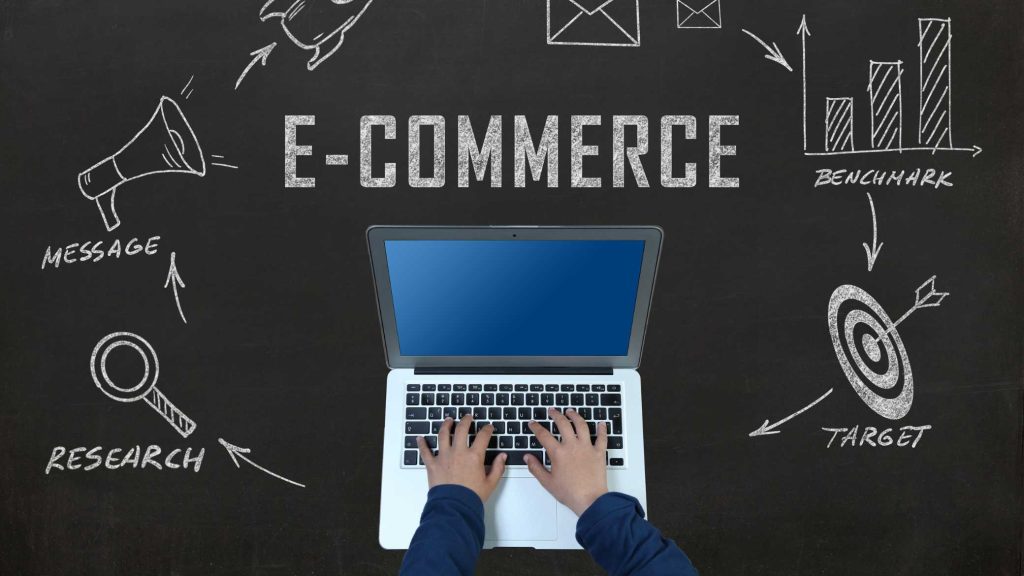
By following this comprehensive guide and staying adaptable to the ever-changing eCommerce landscape, you can build a branded online store that not only meets the demands of 2025 but also positions your business for long-term success.
Buy Now : Ecommerce Website With 100 Products
Disclaimer
The information provided in this guide is intended for general knowledge and informational purposes only, and does not constitute professional advice. The eCommerce landscape is constantly evolving, and the strategies and technologies discussed may change over time. It is essential to conduct thorough research, consult with industry experts, and adapt your approach to your specific business needs and circumstances.
Keywords : Build a Branded eCommerce Store – Build a Branded eCommerce Store 2025 – Build a Branded eCommerce Store today , Build a Branded eCommerce Store in India
